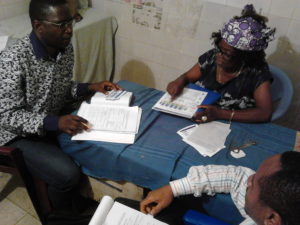More than 900,000 children die of pneumonia each year. Many of these cases go undiagnosed and untreated. The countdown to 2015 report notes that only 54% of children with pneumonia symptoms are taken to a health care provider, while the Global Action Plan for Pneumonia and Diarrhea reports that only 31% of children with suspected pneumonia receive antibiotics.
The WHO recently released new recommendations and guidelines for the use of amoxicillin as a first-line treatment for pneumonia. Amoxicillin dispersible tablets are preferred by many public health systems over oral suspension as they are cheaper, easier to transport, and easier to administer. Many countries have introduced amoxicillin dispersible tablets as first-line treatment in line with the new WHO recommendation; however, ensuring that this policy is translated into practice and that children actually receive the recommended dosage of amoxicillin has proven to be a challenge. Even when antibiotics are available, often the full course of antibiotics is not consistently taken.
Adherence to and completion of treatment with amoxicillin dispersible tablets depends on caregivers having a clear understanding of how to administer the medicine to their children, including the correct dosage, frequency, and timing of treatment as well as how to disperse the tablets. Healthcare providers also need to explain clearly to caregivers how to continue the treatment at home and be sure they have understood. Failure to administer the amoxicillin treatment correctly can lead to treatment failure, as well as the potential for resistance to the antibiotic to develop.
As a member of the global Diarrhea and Pneumonia Working Group (part of the Child Health Technical Reference Team of the UN Commission on Life-saving Commodities for Women and Children), SIAPS, working with PATH and other agencies, contributed to the development of job aids to improve dispensing practices of amoxicillin, and product presentations to improve caregiver’s adherence to correct treatment dosage. By providing job aids for healthcare providers and clear instructions for medication preparation and administration for caregivers, better treatment adherence can be achieved by both providers and caregivers.
SIAPS is currently validating these materials in the Democratic Republic of Congo (DRC), with support from UNICEF. The findings of the validation study in DRC, together with the findings from other pilots being conducted by PATH and UNICEF, will be used to finalize standardized job aids and product presentation which will be shared widely with countries looking to improve treatment practices for pneumonia.
Getting amoxicillin dispersible tablets into the hands of caregivers is only half of the strategy to saving children from pneumonia; we have to do all we can to ensure the caregivers of children with pneumonia are given the right dosage and administration information, and that the children are given the tablets correctly. Appropriate diagnosis and treatment of pneumonia is an important step in preventing child pneumonia deaths around the world as well as containing antimicrobial resistance.
By Jane Briggs, Principal Technical Advisor, SIAPS

